Plans For War in Missouri
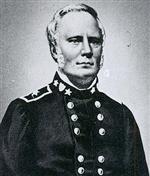
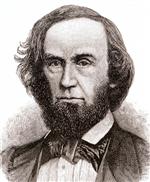
Both Major-General Sterling Price and Missouri Governor Claiborne Jackson were loathe to give up the Missouri River because it would cut off the flow of volunteers from northern Missouri. Union control of the Missouri River would be disastrous for the Southern cause. They had conceived the following plan for the defense of Missouri: [13]
- Governor Jackson had previously ordered the State's quartermaster-general to move the State's armory and workshop from Jefferson City to Boonville.
- They planned to make a stand at Boonville with the intention using the extra time to assemble the Missouri State Guard and establish fortifications at Lexington, Missouri.
- They wanted to hold onto the western counties of Missouri until help arrived from the Confederacy.
Brigadier-General Nathaniel Lyon and Colonel Frank Blair had also been working on a plan to defeat the Missouri State Guard and keep Missouri in the Union. Immediately after the breakup of the meeting at the Planters House Hotel, Lyon met with his staff to begin executing that plan. The plan had two main components: [14]
- Send a column of troops into southwestern Missouri to prevent war supplies or Confederate troops in Arkansas from entering Missouri. This force would also prevent the Missouri State Guard from joining up with the Confederate forces.
- The second movement was to take a force up the Missouri River and capture the major cities of Missouri thus being able to control all the traffic on the Missouri River.
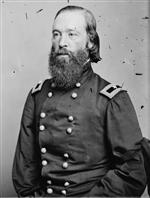
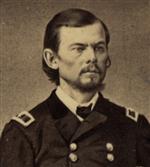
Brigadier-General Nathaniel Lyon ordered the regiments of Colonels Franz Sigel, Charles E. Salomon, and B. Gratz Brown to proceed to Springfield, Missouri. They began heading by rail to Rolla on June 13th and had all left by June 15th. Sent along with them were two batteries (six guns) commanded by Major Franz Backoff. In command of this expedition was Captain Thomas W. Sweeny, recently appointed Brigadier-General of Volunteers. On Thursday, June 13th, Lyon boarded his men, about 2,000 in all, onto steamboats (the Iatan, the City of Louisiana, the A. McDowell, and the J. C. Swan) to head up the Missouri River from St. Louis to Jefferson City, Missouri. With him he had a battery of guns under the command of Captain James Totten. [15]
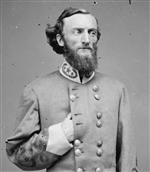
Lyon's rapid movements caught Major-General Sterling Price by surprise. Jackson and Price arrived in Boonville on June 13th and found only a few hundred Missouri State Guard troops, untrained and armed only with shotguns and squirrel rifles. Many were not armed at all. They were under the command of Brigadier General John B. Clark. The largest regiment was commanded by Colonel John S. Marmaduke who had recently graduated from West Point. They were settled in Camp Bacon, about four miles east of Boonville. Without any artillery present, Price realized that the best they could do at Boonville was to put up a delaying action. Price needed some time to organize the Missouri State Guard and make its stand at Lexington, Missouri. At this time, Price became ill with a serious case of dysentery and left to convalesce at his home in Keytesville, Missouri. He left instructions for the State troops to hold Boonville as long as possible, before withdrawing southwest. Governor Jackson assumed command of the State Guard troops in Boonville. [16]
Lyon's forces arrived in Jefferson City around 2:00 P.M. on June 15th and tied up to the wharf near the State Capitol. Lyon discovered that Jackson and Price had fled about 50 miles upriver to Boonville. Lyon disembarked some of his forces to occupy Jefferson City and rebuild the Gasconade River bridge. Here Lyon received information from a Boonville Unionist that the State Guard was building fortifications at Boonville. He also relayed the information that reinforcements were on their way from Tipton. Lyon would waste no time. He decided to leave a small force to occupy Jefferson City and head upriver to Boonville with the remaining 1,700 men. He rested his troops that night, but set out upriver for Boonville on Sunday, June 16th. The next day in the Battle of Boonville, Lyon's forces would attack and quickly disperse the Missouri State Guard forces under the command of Colonel John S. Marmaduke. The Battle of Boonville lasted less than 30 minutes from the time the advancing Federals first opened fire on the Missouri State Guard defensive line until the State Guardsmen were in full retreat. [17]
